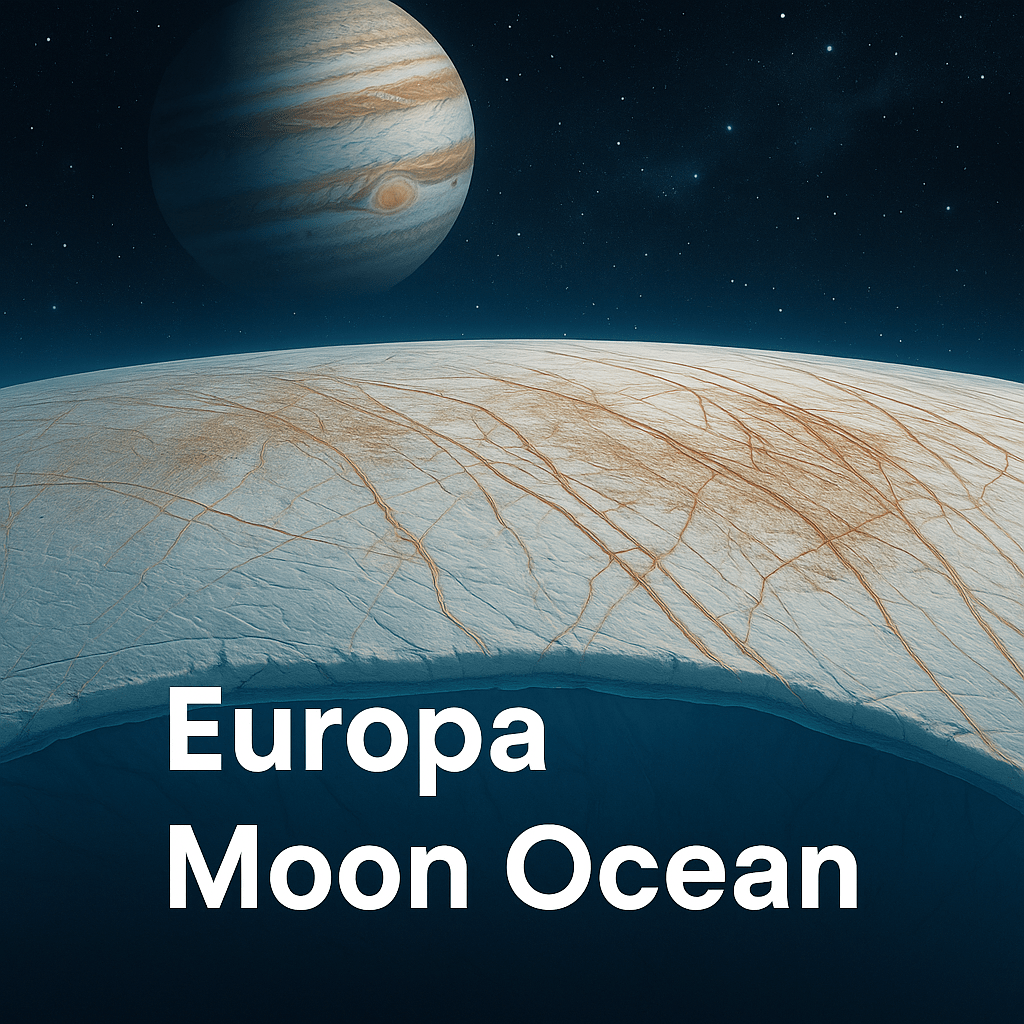In a breakthrough that could reshape our understanding of life beyond Earth, scientists have uncovered compelling evidence of a liquid ocean under Europa one of Jupiter’s most fascinating moons. Recent data collected by the James Webb Space Telescope (JWST) has brought the icy world into sharper focus, strengthening the belief that beneath its frozen crust lies an active and possibly habitable ocean.
The Europa moon ocean discovery is more than just a scientific milestone—it’s a spark that reignites humanity’s age-old question: are we alone in the universe?
James Webb Europa Discovery Sheds New Light
In an unprecedented study led by the Southwest Research Institute, the James Webb Europa discovery revealed irregular crystallization patterns in Europa’s surface ice. These patterns were found in regions like Tara Regio and Powys Regio—areas already known for their geological complexity. The presence of crystalline ice at varying depths points to ongoing geological activity and supports theories that water is cycling between the surface and a subterranean ocean.
This isn’t mere speculation. The findings build on decades of observations going back to the 1960s, when Earth-based telescopes first detected water ice on Europa’s surface. But now, with the powerful infrared vision of JWST, scientists are gaining unprecedented insight into what lies beneath that icy shell.
Is There Life on Europa Moon?
The existence of a liquid ocean under Europa drastically increases the chances of finding microbial life. Water is the essential ingredient for life as we know it, and the conditions beneath Europa’s surface may mirror the deep-ocean hydrothermal vents found on Earth—places where life thrives without sunlight.
“We’re seeing strong signs that material from Europa’s inner ocean may be making its way to the surface,” said Dr. Ujjwal Raut, a planetary scientist involved in the study. “This increases the potential for habitability in a profound way.”
In addition to water, scientists also detected possible traces of carbon dioxide and hydrogen peroxide—key chemical building blocks for life. Their presence suggests that Europa’s internal environment is not only active but also chemically dynamic.
Europa Clipper Mission: Countdown to Discovery

NASA isn’t wasting any time. The Europa Clipper mission, launched in late 2024, is en route to this icy moon and is expected to arrive by the early 2030s. Its mission: to determine whether Europa’s subsurface ocean could support life.
While the spacecraft is currently taking a trajectory that swings past Mars for a gravity assist, it carries state-of-the-art instruments designed to penetrate Europa’s ice, analyze its surface chemistry, and study its magnetic field. This will provide the most detailed look yet at one of the most promising destinations in the search for alien life.
The Europa moon ocean NASA research team has high hopes that this mission will confirm what telescopes have only hinted at so far—a habitable world beneath the ice.
Europa Moon Surface Features Hold Clues

The Europa moon surface features are anything but boring. Far from being a static, frozen desert, Europa’s surface is marked by ridges, fractures, and chaotic terrains that suggest recent geological activity. These features serve as windows into the ocean below, and scientists believe they are created by the movement of liquid water or slushy ice pushing up from beneath.
By studying these patterns, scientists can trace how heat and energy flow through Europa’s shell—critical factors for maintaining liquid water beneath such an extreme environment.
Why This Matters
The discovery of a Europa moon ocean beneath an icy surface just 20 to 30 kilometers thick is not just a scientific curiosity it could redefine the boundaries of life in our solar system. If life exists in such a remote, hostile environment, it opens the door to the possibility that similar forms of life may exist on other icy moons, or even exoplanets beyond our solar system.
This moment represents a convergence of years of observation, cutting-edge space technology, and human curiosity. With NASA’s Europa Clipper mission on the way and James Webb providing ongoing support, we’re closer than ever to answering the biggest question in science.
Are we truly alone? Or is life quietly swimming beneath Europa’s ice, waiting to be discovered?
